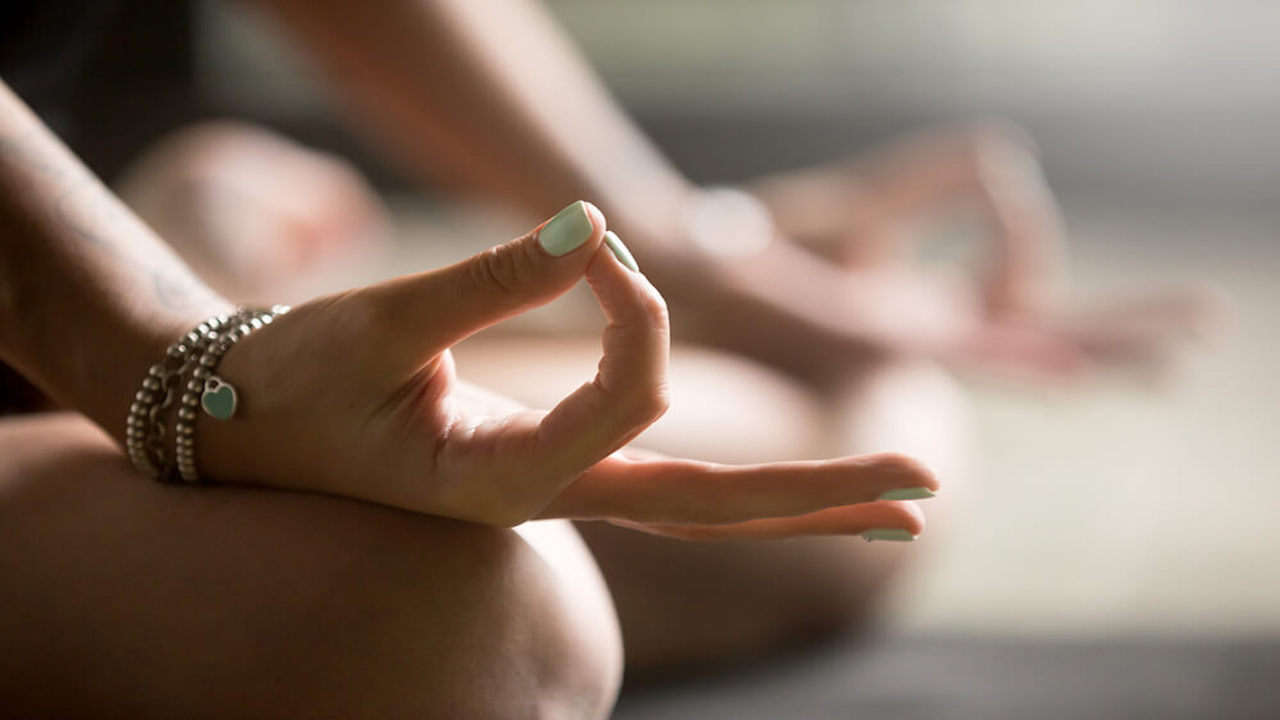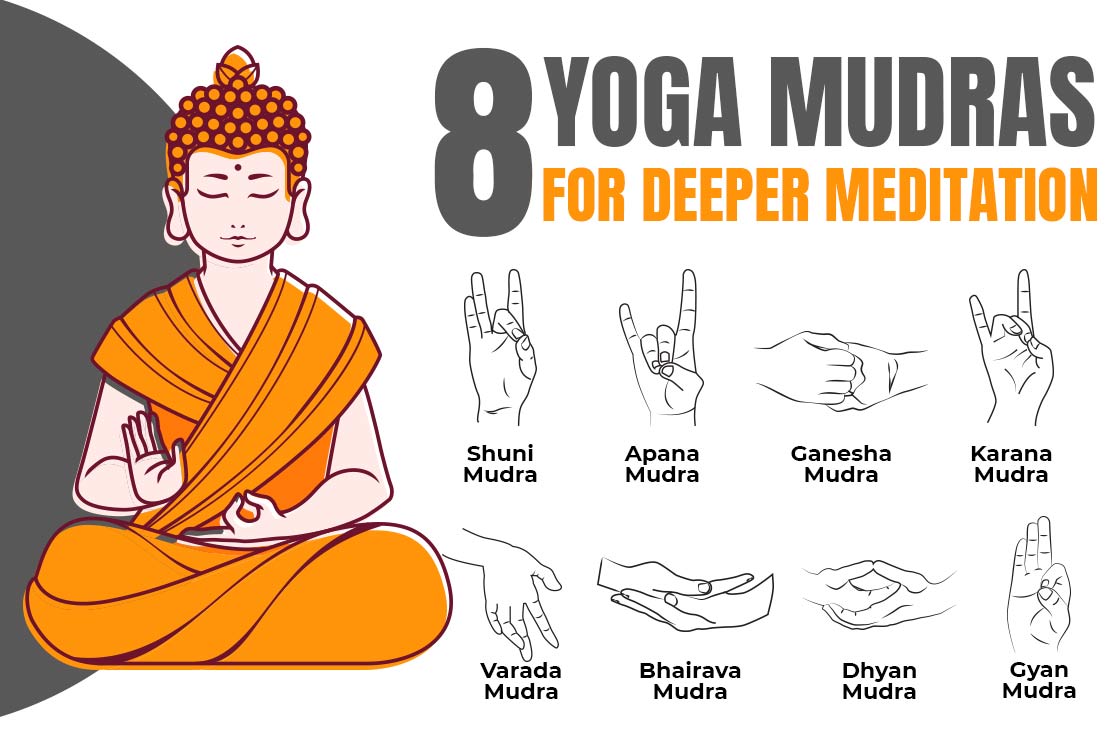What is Yoga Mudra
Mudra" is a Sanskrit term that refers to hand gestures used in Hindu and Buddhist rituals and practices, including yoga. These gestures serve as symbols, seals or signatures that evoke certain spiritual qualities, energies, and states of consciousness.
There are many different mudras used in yoga, each with its own specific meaning and benefits. Some of the most common ones include:
Anjali Mudra: Also known as the "prayer gesture," this mudra involves pressing the palms of the hands together in front of the heart in a gesture of respect, devotion, or humility.
Chin Mudra: This mudra involves touching the tip of the index finger to the tip of the thumb, symbolizing the union of individual consciousness with universal consciousness.
Dhyana Mudra: This mudra symbolizes concentration and meditation. It's performed by placing the palms of both hands on the knees, with the tips of the thumbs and index fingers touching.
Jnana Mudra: This mudra involves touching the tip of the thumb to the tip of the index finger, symbolizing the attainment of wisdom.
Namaste Mudra: Similar to Anjali Mudra, this mudra involves pressing the palms of the hands together in front of the heart, with the fingers pointing upwards. The word "Namaste" is often spoken along with this gesture as a sign of respect and greeting.
It's important to note that while mudras can be used as part of yoga practice, they are not limited to it and can be incorporated into other spiritual and meditative practices as well.
Yoga Mudra for Meditation & Yoga
Yes, mudras are often used in meditation and yoga as a way to direct and channel the flow of energy within the body and help cultivate specific states of mind and consciousness. Here are some mudras that are commonly used for meditation and yoga:
Adi Mudra: This mudra symbolizes the beginning and is performed by touching the tip of the thumb to the base of the small finger, symbolizing the connection to the earth and grounding.
Shuni Mudra: This mudra symbolizes patience and is performed by touching the tip of the middle finger to the tip of the thumb, which is said to increase patience and provide a calming effect.
Bhairava Mudra: This mudra is used to dispel fear and is performed by touching the tips of the thumb and the little finger together.
Gyan Mudra: This mudra symbolizes knowledge and is performed by touching the tip of the index finger to the tip of the thumb.
Prithvi Mudra: This mudra symbolizes the earth element and is performed by touching the tips of the thumb and ring finger together.
Varuna Mudra: This mudra symbolizes the water element and is performed by touching the tips of the little finger and thumb together.
Vayu Mudra: This mudra symbolizes the air element and is performed by touching the tips of the index finger and thumb together.
Agni Mudra: This mudra symbolizes the fire element and is performed by touching the tips of the ring finger and thumb together.
It's recommended to hold these mudras during meditation or yoga practice for several minutes to several tens of minutes, depending on the specific practice and individual preferences. It's also important to practice these mudras with proper alignment and with awareness of the breath and body.
Healing Mudra For Chakra Balancing
Yes, mudras can be used as a tool for balancing the chakras, which are the energy centers in the body. By directing the flow of energy through specific hand gestures, mudras can help to balance and harmonize the chakras, promoting physical, emotional, and spiritual well-being. Here are some mudras that can be used for chakra balancing:
Muladhara (Root Chakra) - Apana Mudra: This mudra stimulates the root chakra and is performed by pressing the tips of the middle finger, ring finger, and little finger to the base of the thumb.
Svadhishthana (Sacral Chakra) - Varuni Mudra: This mudra stimulates the sacral chakra and is performed by pressing the tips of the little finger and thumb together.
Manipura (Solar Plexus Chakra) - Surya Mudra: This mudra stimulates the solar plexus chakra and is performed by pressing the tip of the ring finger to the base of the thumb.
Anahata (Heart Chakra) - Anjali Mudra: This mudra stimulates the heart chakra and is performed by pressing the palms of the hands together in front of the heart.
Vishuddha (Throat Chakra) - Shuni Mudra: This mudra stimulates the throat chakra and is performed by touching the tip of the middle finger to the tip of the thumb.
Ajna (Third Eye Chakra) - Gyan Mudra: This mudra stimulates the third eye chakra and is performed by touching the tip of the index finger to the tip of the thumb.
Sahasrara (Crown Chakra) - Shambhavi Mudra: This mudra stimulates the crown chakra and is performed by gazing at the point between the eyebrows.
It's important to remember that the process of chakra balancing is ongoing and requires regular practice, patience, and a willingness to release old patterns and embrace new growth. It's also recommended to work with a knowledgeable teacher or practitioner to ensure that you are practicing the mudras correctly and safely.
Benefits Of Yoga Mudra
Yoga mudras can bring about a range of physical, mental, and emotional benefits, as they serve to balance and harmonize the flow of energy within the body. Here are some of the benefits of practicing yoga mudras:
Physical Health: Certain mudras, such as Prithvi Mudra, can stimulate the flow of energy to certain parts of the body and help to alleviate physical conditions such as arthritis, carpal tunnel syndrome, and digestive issues.
Mental and Emotional Well-Being: Mudras such as Bhairava Mudra and Shuni Mudra can help to calm the mind and dispel fear and anxiety.
Spiritual Connection: Yoga mudras can deepen one's spiritual connection and raise awareness of the interconnectedness of all things.
Improved Focus and Concentration: Certain mudras, such as Gyan Mudra and Dhyana Mudra, can help to improve focus and concentration and promote a meditative state.
Increased Energy: Some mudras, such as Vayu Mudra, can stimulate the flow of energy throughout the body, increasing vitality and alertness.
Balance and Harmony: Practicing mudras can bring balance and harmony to the body, mind, and spirit, promoting a sense of well-being and peace.
It's important to note that while these benefits can be experienced by practicing yoga mudras, they are not guaranteed and may vary from person to person. As with any physical or spiritual practice, it's recommended to approach the practice with an open mind and to listen to one's own body to determine what works best.




